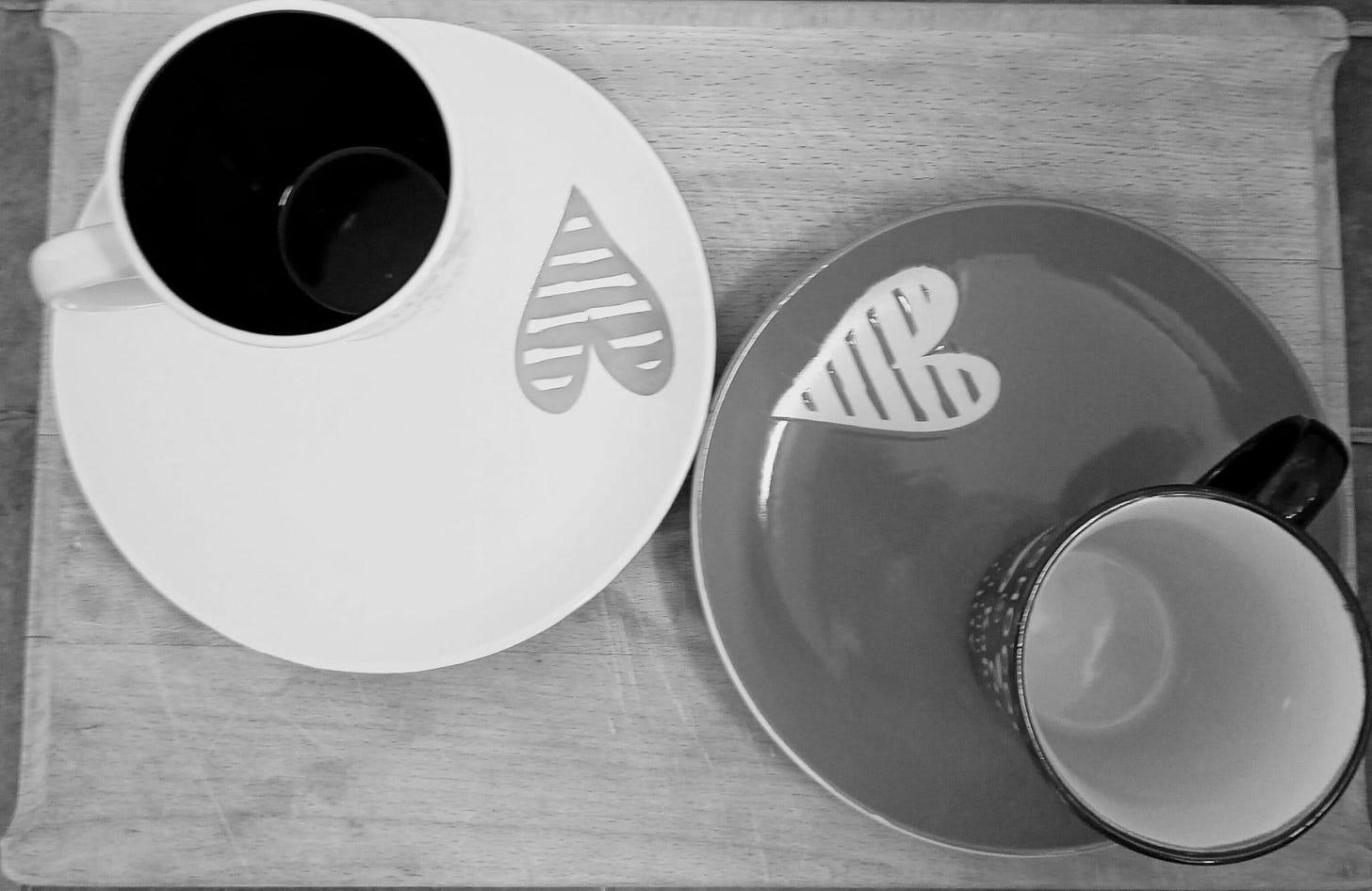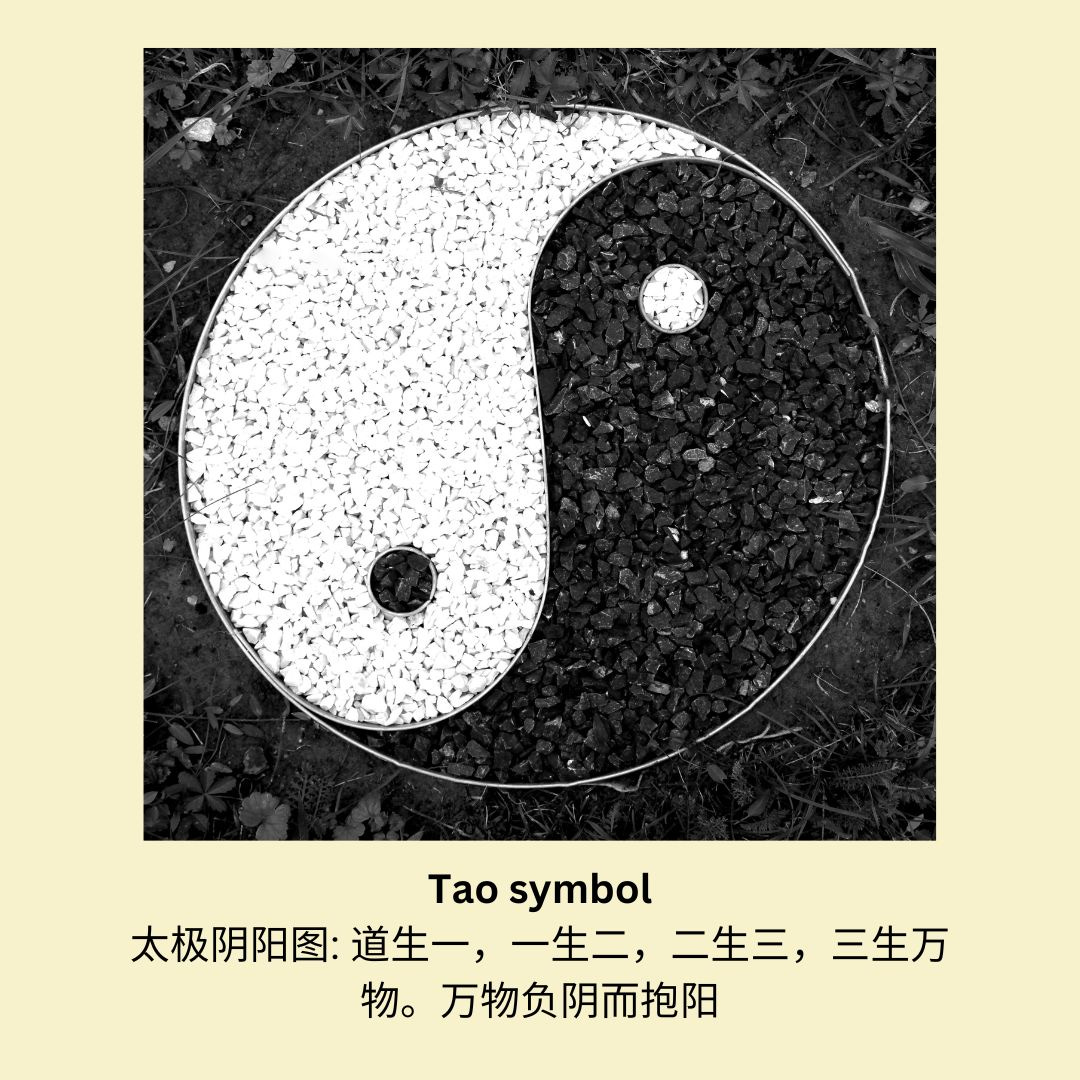Yin and Yang
Explained in three glasses
We are getting here in the core of Chinese culture, for the concept of Yin and Yang are not only one of the pillars of TCM but also integral part of the Chinese philosophy.
Explaining in detail the school of thoughts which originated the notion of Yin and Yang is beyond the scope of this post. But I want to briefly touch upon the Yijing 易经 (or the Book of Changes) because its graphic representation can help assimilate the concept of Yin and Yang.
The Yijing was a divination text, probably written at the beginning of the Zhou dynasty, around the XI century B.C. It is one of the 5 Classics, which all those aspiring to pass the imperial examination since the Han Dinasty onwards had to study.
From its origin as divination manual, it later evolved into a cosmological text. In the Appendix V to the Yijing, it says that Heaven is round, it is the father and it is represented by a trigram formed by three continuous lines; Earth is the mother and it is represented by a trigram formed by three broken lines.
Yin and Yang each symbolizes familiar concepts we use and experience everyday:
cold – warm
night – day
passive – active
rest – movement
female – male
Earth – Heaven
From this short list (but it can be muuuuch longer) I am sure you can see that they represent opposite concepts. What you can also see is that by taken them together (including the steps/shades in between the extremes), you can reach a whole. For example:
cold and warm= all the seasons of the year
night and day= a full 24h day
passive and active= communication between two people
rest and movement= a water cycle (where rest is the water in lakes, oceans, rivers and so forth, while movement is its evaporation, precipitations, run off)
female and male= their union creates a being
Earth and Heaven= their union encompasses all existing things
Got it? Wonderful, you have already learned half of the Yin and Yang theory:
Yin and Yang are opposite aspect of a whole. We could thus say that they have the same origin and that they mutually exclude each other: to keep the same balance of the whole, when Yang increases, the Yin must decrease and viceversa.
You probably already saw the Tao symbol below:
The white represents Yang and the black represents Yin.
The capture of the Tao symbols says: the One (the Tao) generates the Two (Yin and Yang), the Two generates the Three (Qi), the Three generates the Ten Thousand Things (the universe or the world in general). The Ten Thousand Things encompass Yin and Yang. (Laozi 老子, Daodejing 道德经, chapter 42)
As mentioned above Yin and Yang are originated from the same source and yet within themselves they have the germ of the opposite, thus generating each other.
You can see that in the white “fish” there is a black dot and vice versa. Within the Yin there is the germ which allows Yang to grow and viceversa. This also means that there is nothing which is completely and purely Yin or Yang.
Thus, Yin and Yang are always relative: something is Yin when compared to something Yang. For example:
Your head is Yang, and the rest of the body is Yin; but when you consider the upper body, including the head and the lower body, the former is Yang, and the latter is Yin. Chicken meat is considered Yang compared to vegetables, but it is considered Yin when compared to lamb meat.
Everything always has a little bit of Yin in Yang and a little bit of Yang, and the ceaseless movement of the universe creates a never-ending alternance between the two: Yin transforms into Yang and Yang transforms into Yin.
In TCM these are very important aspects and are the foundation of the TCM theory.
TCM Yin and Yang can be represented as follows:
Here the utmost Yin or utmost Yang do not show the presence of its opposite; the important thing in this graphic is the transformation of Yin into Yang and vice-versa. When Yin reaches its peak, it transforms into Yang, like the darkest hour of the day, gives way to the light.
In clinical terms, this means an excess of Yang, can transform into Yin: a temperature caused by an external factor (for example Cold or Heat) can quicky enter the body and from being a sudden (Yang) illness becomes a chronical (Yin) illness, like a back pain which may first be caused by a Cold attack, which turns into a chronic one due to inadequate therapy.
The theory of Yin and Yang helps establishing a diagnose, the depth of an illness and its possible development.
Health depends on the harmonious balance of Yin and Yang. The moment one of them increases or diminishes beyond the quantity needed to keep the balance, there is illness.
You can imagine three glasses, one is full of cold water, one is full of hot water. The third glass is used to mix the two other liquids. Health is when the third glass is full, and its temperature is neither too cold or too hot, despite the fact the mix of cold and hot can change. If we add for example more cold water in the third glass as usual, not only will the third glass eventually overflow, but the temperature of the mixture will be now exceedingly cold. If we have less cold water and the same amount of hot water, we end up having less liquid in the third glass and even though we did not pour more hot water than usual, the temperature will be exceedingly hot because the cold water is not enough.
Well, the third glass is our body, the cold water represents the Yin, the hot water represents the Yang.
In the course of life, there are phases when the temperature of the glass will be too hot or too cold, but usually the body can regain its natural balance, under normal circumstances. Children are pure Yang, teenagers also tend to be more Yang, elderly are more Yin, women in menopause can be both.
The cold/warm pair is one of the most significant in TCM. In my qigong classes I often compare Yin and Yang with a cooling and a heating system, to simplify it.
There are other important pairs, but that will be for later posts!
I hope my explanation and the examples helped you grasping the main points of this important theory. Understanding Yin and Yang is the key to later understand better nutrition posts and have a couple of tools to decide what your body needs.
You are welcome to share any comments or ask questions.







阴阳调和,it’s all in the balance, isn’t it? 😊